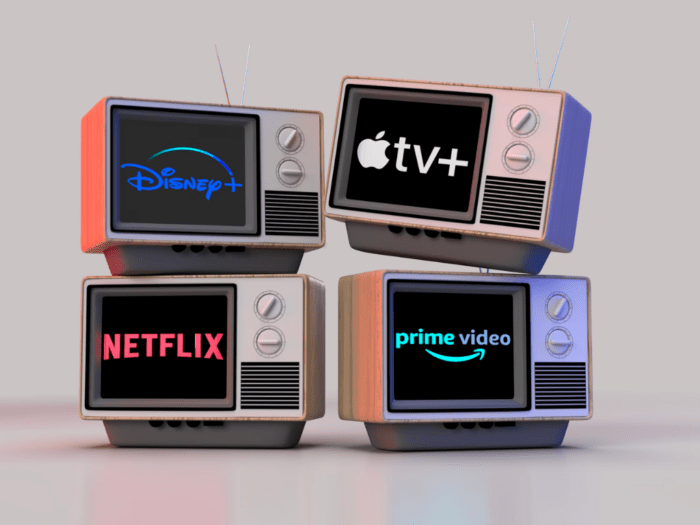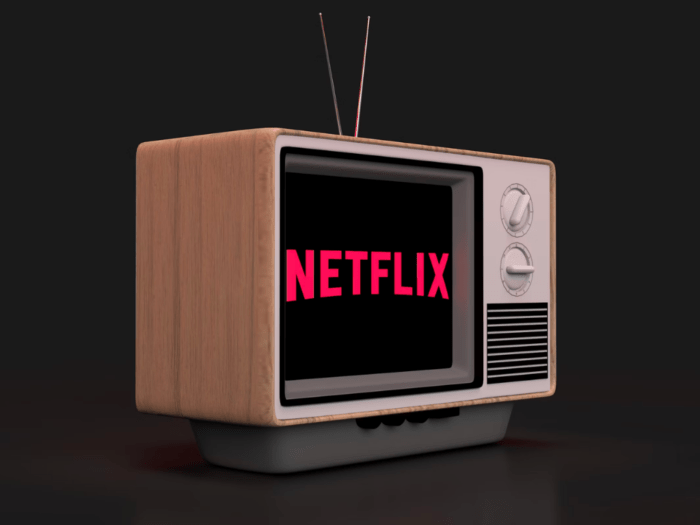The State of Streaming in Canada: Balancing Ads & Entertainment
If you’re a consumer-of-content, a supporter-of-streaming, a movie-marathoner or just an average household in Canada—more than four in five Canadians, or 85%, subscribe to a least one streaming service—-then you’ve likely heard of the changes to your services over the past year.

From crack-downs on password sharing to the introduction of premiums for non-ad-supported tiers, being a consumer of streaming services has changed. And, in many ways, has increased in cost. Add in a cost-of-living crisis affecting many Canadians, and some consumers are choosing to cut streamers or opt-in to ad-supported content.
On the marketing front, the way we approach OTT (over-the-top) advertising is about to enter a new era. From Amazon’s targeting-ability to Netflix’s robust library of content, advertisers will have the opportunity to get in front of some key audiences, in an immersive way. OTT is not new, neither is targeting content-consumers with pre-roll or mid-roll video. What is new is the players in the game. In the US, Peacock, Paramount and Hulu have seen success in introducing ads into their platforms, with over 60-and-70% viewer penetration with the new ad-focused-formats, but numbers were significantly lower for Netflix, Crave and Disney+. Marketers in Canada are eager to see how things will fare north of the border; Amazon currently accounts for 80% of all Canadian retail media ad spend, ahead of the US and the UK, which shows a vested interest in the platform (eMarketer, 2023).
Let’s take a look at how some of the major streaming platforms–Netflix, Amazon Prime, CRAVE and Disney+–are changing this year for Canadian consumers and advertisers.

Netflix
When Netflix first launched it offered a single fixed price for its service, with no “commercial breaks.” This changed the way consumers watched television and movies, and had a major impact on the landscape. Over the years it has increased its service costs based on various factors, including the number of users accessing the account (password sharing) and now based on whether or not you choose to view ads within your TVs and movies (anyone getting deja-vu?).
As of early 2024, consumers’ options will be:
- Netflix Basic with ads: $5.99/month – one device/stream
- Netflix Basic (no ads): $9.99/month – one device/stream
- Netflix Standard: $16.49/month – two streams
- Netflix Premium: $20.99/month – up-to-four streams
Ads are expected to start rolling onto screens in Q1 of this year (2024).
For advertisers, they can secure Netflix ad space on a CPM basis, with monthly minimum spends likely over the $10-15k mark. At the outset, advertisers will have the ability to geo-target down to specific provinces (not city-level) but added audience targeting remains to be seen. Netflix’s edge will undoubtedly be its library and adoption rate, so it will be interesting to see if that evolves as providers change their structures. Purchasing Netflix is available through Xandr, which requires an account and has a minimum spend. It can also be accessed through third-party resellers.
Amazon Prime
Amazon Prime is a unique product. What began as a membership subscription to enable 2-day shipping grew into a service that now offers access to a library of movies, music and other streaming content. All of this is included in the fee you pay. As a result, Amazon has access to a wealth of first-party data.
The platform set a February 2024 launch date for its ad-supported content, so you may have noticed some changes in your viewing recently. Consumers are now looking at an increase to $99 per year (as their Amazon Prime fee) for non-ad-supported content, or $9.99 per month; increases of $20 and $2, respectively, to opt out.
For advertisers, Amazon offers the ability to tap into their first-party data to customize their marketing efforts. Because the streamer began in the e-commerce space (shopping on Amazon), there are more unique targeting identifiers that may become options for advertisers in Canada. Demographic information, such as interests (based on shopping habits), age, city and device type are all possibilities, as are dayparting and even program-type/contextual targeting. In a world where the absence of cookies (online) has pushed first-party data to the forefront—as a valuable element to successful marketing—Prime may be primed to be a leader in this space.
Buying ads on Prime will also be on a CPM basis with likely a higher minimum monthly spend (think closer to $20-30k per month) taking effect. CPMs will depend on the level of targeting an advertiser is looking for, and will increase from a base rate. Similar to other digital programmatic buying, program and genre targeting and blocking may also be available for a premium. Purchasing ads on Prime is available through the Amazon DSP, which also requires access through a paid account/seat or with a reseller.
Crave
Crave is a Canadian subscription on demand service that is owned by Bell Media. It provides access to content from channels like HBO and Showtime, and its own exclusive content as well. It is currently $22/month for subscription with no ads, and offline downloads. If you opt-in to ads, you can pay $14.99 for 4K video and 4 streams (devices), or a basic plan for $9.99 and one stream, at lower quality.
Purchasing ads in Crave can be done through Bell Media. Bell is in its own unique position with OTT advertising as it is a mobile carrier as well. There could be opportunities for advertisers to layer their CTV buys within CRAVE with other efforts across the Bell Network, for added exposure. Currently ads can be purchased on a CPM basis, and can be combined with instream and outstream impressions as well. Minimum monthly spends are in place, but generally lower than Prime or Netflix.
Disney+
As of late 2023 Disney+ began offering ad supported tiers to their subscribers after successfully launching in the US. A standard monthly subscription with ads is $7.99/month. A standard subscription (2 streams) without ads is $11.99/month; adding in 4 streams will take your monthly fee to $14.99/month.
In the US the platform actually sees higher ad-supported viewer penetration than Max (HBO) or Netflix, but less than Peacock and Paramount (eMarketer 2023). This likely has a lot to do with the duration each platform has been in market with ad-supported content, and the kinds of content on each platform (consumers’ selections on which tiers they select for certain services based on their respective libraries), along with other factors. It will be interesting to see how Disney+ fares in the Canadian market. It offers a host of family content, and could reach a desirable audience that is different than its competitors. Buying, through resellers, will be available in spring of 2024 and will be subject to minimum monthly spends.

This shift in the OTT landscape will no doubt offer advertisers an attractive way to hit audiences if they can afford to do so. As the digital media landscape shifts and moves, costs will likely adjust. What will be interesting to see is how having all of these streamers in-market will create a competitive landscape. Currently Apple TV does not have an ad-supported subscription tier, for example. These changes could alter the way we subscribe to content, if services ultimately consolidate. We might also see efficiencies in buying ads across these streamers with our ad buying partners, where we can complement OTT campaigns with the use of multiple platforms.
If all of this is dizzying, perhaps we need to engage the TV Times to streamline our programming for us, in some new way… and then buy some outside-back-covers while we’re at it!
